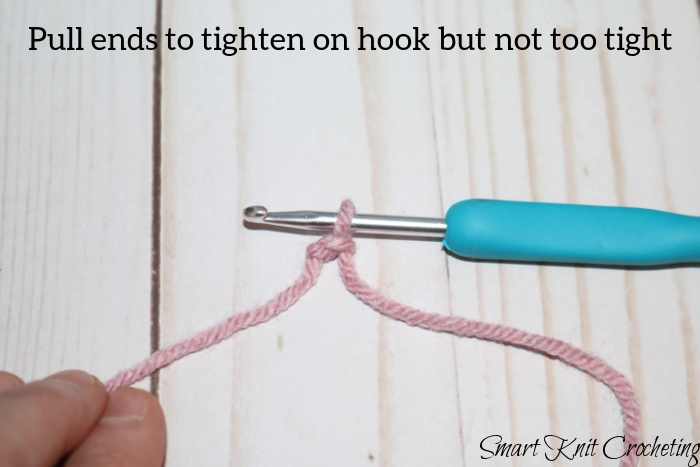Slip Knot in Knitting and Crochet: A Comprehensive Guide
Knitting and crochet are ancient crafts that have stood the test of time, evolving from basic forms of handwork to intricate art forms. Central to both these crafts is the slip knot, a fundamental technique that serves as the starting point for creating beautiful and functional items. In this article, we will delve deep into the world of slip knots in knitting and crochet, exploring their significance, techniques, variations, and common uses.
The Significance of the Slip Knot
The slip knot is the foundational element of both knitting and crochet. It is the very first step in creating a new project and serves as the anchor point for all subsequent stitches. This simple loop of yarn not only provides a secure starting point but also determines the tension and shape of the stitches that follow. Mastering the slip knots is essential for achieving consistent and even results in knitting and crochet projects.

Creating a Basic Slip Knot
Creating a basic slip knot is a straightforward process that involves a few simple steps. Follow these instructions to create a slip knot:
- Begin by holding the working end of the yarn (the end attached to the skein or ball) between your thumb and fingers. Allow a tail of yarn to hang freely, leaving a few inches for weaving in later.
- Create a loop by crossing the working end over the tail end. Also, position the working end on top of the tail.
- Insert your fingers through the loop from below, forming a loop that resembles the shape of the number “4”.
- With your fingers through the loop, grasp the working end of the yarn. Pull it through the loop and create a new loop.
- Gently pull both ends of the yarn to tighten the knot around your fingers. Slide off the loop you formed from your fingers, leaving behind a secure and adjustable slip knot.

Variations in Slip Knot Techniques
While the basic slip knot is universally used, there are variations in techniques that cater to individual preferences and project requirements. Here are a few notable variations:
- Twisted Slip Knot: This technique involves inserting your fingers through the loop with a twist. It results in a more stable knot. Twisted slip knots can help prevent the loop from becoming too loose as you work.
- Slip Knot with Adjustable Loop: For projects demanding a loop that you can readily adjust, like those requiring variable loop tension, an ideal choice is a slip knot featuring an adjustable loop. Achieve this by partially tightening the knot and retaining some slack in the loop.
- Double Slip Knot: When a particularly secure starting point is necessary, you can utilize a double slip knot. This involves creating two consecutive slip knots using the same tail of yarn.
- Magic Ring in Crochet: In crochet, crafters utilize a variant of the slip knot known as the “magic ring” or “magic loop” to initiate projects that entail working in the round. This technique creates an adjustable loop that can be tightened to close the center of the project.

Common Uses of Slip Knots
Slip knots find various applications in both knitting and crochet, playing a crucial role in shaping and starting projects. Some common uses include:
- Casting On in Knitting: The slip knot is the starting point for casting on stitches in knitting. It anchors the first stitch to the needle, enabling the formation of subsequent stitches.
- Starting Chains in Crochet: In crochet, slip knots initiate the foundation chain, establishing the base for crafting subsequent rows of stitches.
- Joining Yarn: When changing colors or adding a new ball of yarn, slip knots can be used to secure the new yarn to the existing work.
- Creating Loops for Buttons or Ties: Slip knots can be used to create loops for buttons, ties, or other fasteners in garments and accessories.
- Adjustable Closures: In accessories like scarves or cowls, slip knots can be used to create adjustable closures, allowing the wearer to customize the fit.

Troubleshooting and Tips
While slip knots are generally simple to create, beginners might encounter some common issues. Here are a few troubleshooting tips:
- Avoid Over-tightening: Over-tightening the slip knot can make it difficult to work subsequent stitches. Keep the loop loose enough for the needle or hook to easily slide through.
- Consistent Tension: Maintaining a consistent tension while creating the slip knots ensures that subsequent stitches are even and uniform.
- Practice Makes Perfect: Like any skill, creating slip knots improves with practice. Experiment with different techniques and variations to find what works best for you.
Conclusion
The slip knot is an essential technique that forms the foundation of both knitting and crochet. Its simplicity belies its significance, as it sets the stage for creating intricate and beautiful projects. Whether you’re a seasoned crafter or a beginner, mastering the art of creating slip knots will undoubtedly enhance your knitting and crochet endeavors. As you embark on new projects, remember that this humble loop of yarn is the key to unlocking a world of creative possibilities.








